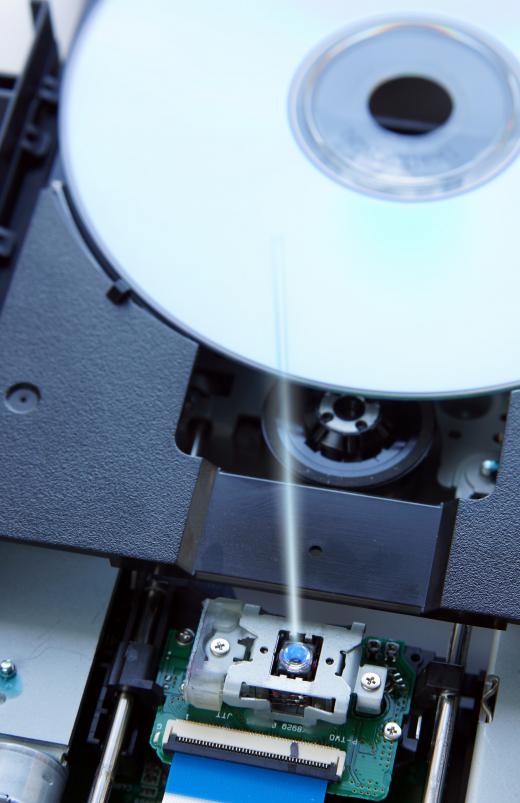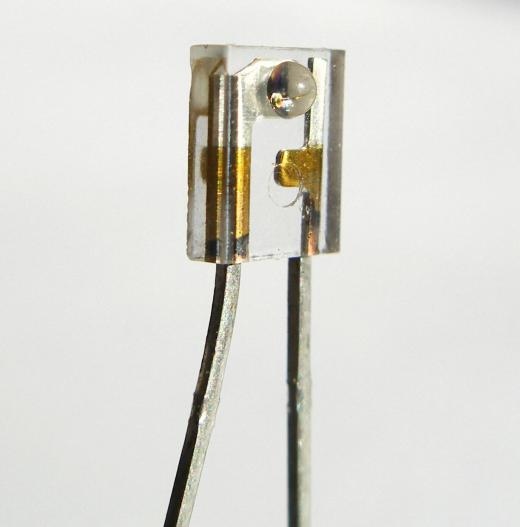A junction diode is a semiconductor crystal, usually made of silicon, with two electrical terminals attached. A P-N junction diode is the most common type of semiconductor diode. The junction diode characteristics typically allow it to conduct current easily in one direction but not the other. Junction diodes can be used to change alternating current (AC) into direct current (DC), sense temperature, and protect circuits from damaging voltages. They can also create and sense light, form logic gates and perform many other functions. Different types of junction diodes are used in such devices as radios, TVs and CD drives, among many other electronic devices.
When a junction diode is made, its crystal is implanted with p-type positive charge carriers, called holes, on one side. The other side is implanted with n-type negative charge carriers, which are electrons. The thin region in between is known as the P-N junction. Some electrons wander across the junction to combine with holes, and vice versa. This creates a narrow region of neutral charge around the junction, called the depletion layer.

When a forward bias voltage is applied across the junction diode, it typically forces more electrons into the n-type region. It also forces more holes into the p-type region. As this voltage increases, the depletion layer narrows. This makes it easier for current to flow across the junction. Once the forward bias exceeds a certain voltage, current can flow quite easily.

If the opposite, a reverse bias voltage, is applied, more holes may be extracted from the p-type region and more electrons from the n-type region. The holes and electrons are drawn away from the junction, widening the depletion layer. This typically makes it harder for current to flow. As the reverse bias voltage increases, the current across the junction slows to nearly zero. The remaining "leakage" current is often very small but can increase with the diode junction temperature.
A junction diode has many uses related to its ability to conduct current in only one direction. For example, it can convert AC to DC, also known as rectification. It can also separate the audio signal from the radio frequency (RF) signal in a radio receiver. In control circuitry, junction diodes can offer protection from power spikes when a high-current device, such as a motor or relay coil, is switched on or off. Many types of integrated circuits employ diodes on every pin to prevent excessive outside voltages from damaging the chip.
Junction diodes can be very light-sensitive without the dark plastic they are typically encased in. They are commonly used as photodiodes to detect light, and in solar cells to convert light into electricity. A light-emitting diode (LED) is a junction diode which generates photons. LEDs exist in a variety of colors and can produce light from infrared to near ultraviolet. They are often used as status indicators in electronic devices as well. A laser diode generates light of a single wavelength that is usually focused through a polished cavity in its packaging. Laser diodes are frequently used in high-speed communications and consumer CD/DVD drives.
Other applications of junction diodes include logic gates, keyboard matrices, temperature sensors and voltage regulators. A junction diode can also act as a variable voltage-controlled capacitor; a radio or television tuning circuit can vary the size of the diode's depletion layer, which in turn changes the capacitance.
